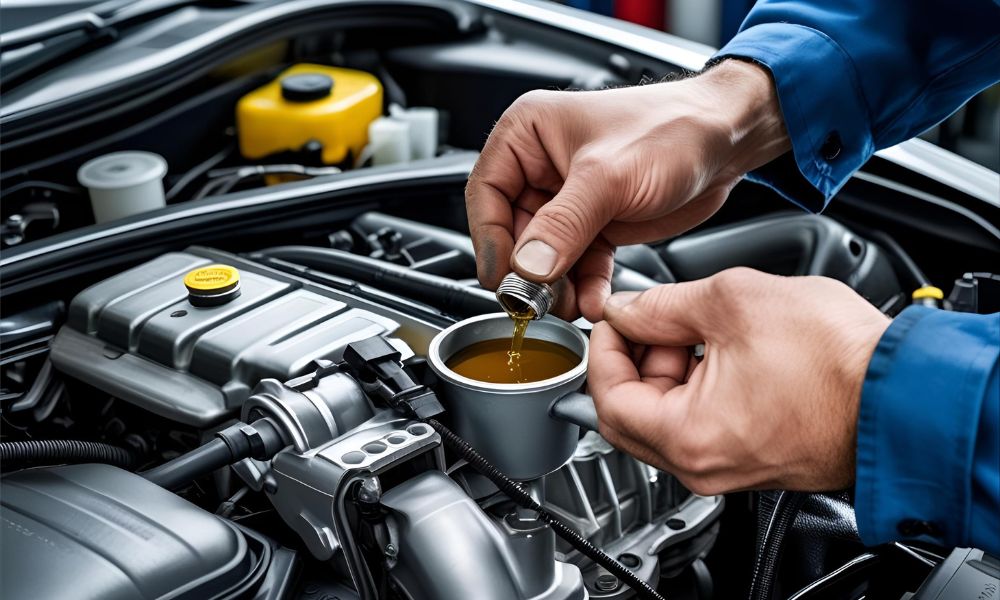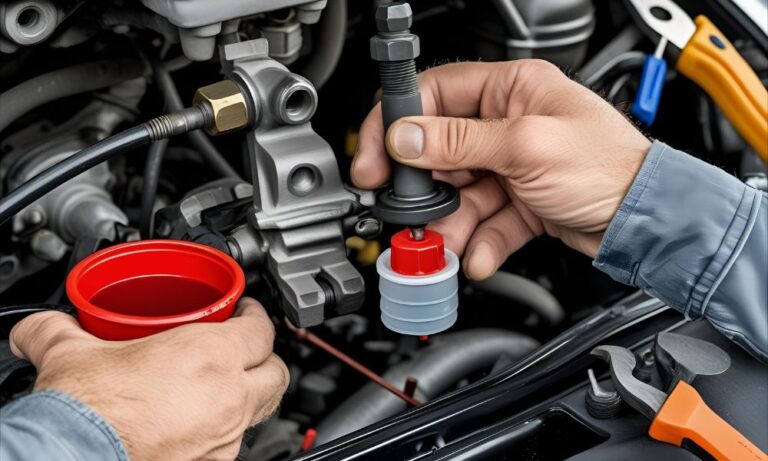How to Check Transmission Fluid: A Complete Guide
The transmission system of your car depends on transmission fluid. It ensures that everything functions properly and that your automobile switches gears smoothly. However, with time, the fluid level may decrease or the fluid may become polluted. To ensure your automobile runs at its best and lasts a long time, you must know how to check transmission fluid and maintain it properly. Regardless of how experienced you are or how new you are to automobile ownership, this guide will help you navigate the process.
If you’re also wondering about other engine fluids, check out How Often Should You Change The Oil And Oil Filter In Your Vehicle?
Signs That You Need to Check Your Transmission Fluid
Checking your transmission fluid on a regular basis might help you avoid expensive issues. However, how can you choose when to check it? Here are a few typical indicators that it’s time to check your hydration levels.
Unusual Shifting Sounds or Delayed Gear Changes
The transmission fluid in your automobile may be low or unclean if it starts making odd sounds or if you experience a delay while changing speeds. The transmission’s working elements depend on fluid to keep them lubricated; if there is not enough, portions may grind against one another, creating an unmistakable noise.
Slipping Gears: What It Means for Your Transmission
Low transmission fluid levels might cause sudden gear slippage. In addition to being inconvenient, this is risky. Unexpectedly shifting gears while you’re driving is a dead giveaway that the fluid may need to be changed.
Warning Lights on Your Dashboard: What to Look For
Sensors that identify gearbox issues are often found in modern cars. It’s time to check your fluid if the check engine light or a warning light unique to your gearbox appears on your dashboard. The purpose of these lights is to notify you before the issue becomes worse.
Unexplained Vibrations While Driving: Could It Be the Fluid?
Your automobile may have a transmission issue if it begins to vibrate more than normal while you’re driving. These disturbing vibrations may be the result of the transmission’s components operating improperly due to low fluid levels.
In some cases, it might also feel similar to when a car shakes while accelerating, which can happen due to other mechanical issues, too.
Understanding the Role of Transmission Fluid in Your Car
Understanding the function of transmission fluid in your vehicle is essential to knowing how to check it properly. Cooling, lubrication, and seamless gear changes all depend on transmission fluid. Without it, the gearbox in your automobile might overheat and fail catastrophically.
What Is Transmission Fluid and Why Is It Important?
Transmission fluid performs a number of essential tasks. In order to reduce friction, it lubricates the transmission’s moving components. Additionally, it removes heat from the gearbox by acting as a coolant. The gearbox may overheat without the right fluid, damaging its parts beyond repair.
How Transmission Fluid Affects Gear Shifting and Car Performance
Both manual and automatic transmissions benefit from the smooth gear changes made possible by the transmission fluid. Insufficient fluid might cause gears to engage incorrectly, leading to jerky or delayed shifts. The performance of your vehicle and your driving experience may be significantly impacted.
Types of Transmission Fluid: Choosing the Right One for Your Vehicle
Different transmission fluids have different properties. Different fluids are needed for different kinds of automobiles. Always consult the owner’s handbook before making a purchase, since the manufacturer of your vehicle will indicate the precise kind of fluid required. The transmission system may suffer harm if the incorrect fluid is used.
Tools You’ll Need to Check Transmission Fluid
Before you begin checking your transmission fluid, ensure you have the necessary tools. A few simple items can make the task much easier and safer.
Transmission Fluid Dipstick: What It Is and How to Use It
In most cars, the transmission fluid dipstick is the key tool for checking fluid levels. This long, thin rod is typically marked with indicators to show the proper fluid level. By removing and inspecting the dipstick, you can quickly assess whether the fluid needs topping up or replacing.
Other Tools You Might Need: Funnel, Gloves, and Rags
A funnel is essential for adding fluid without making a mess, and gloves will help keep your hands clean. You may also want a rag or paper towel to wipe off the dipstick for accurate readings.
Creating a Regular Transmission Fluid Check Schedule
It’s recommended to check your fluid levels every 30,000 miles or at least once a year. Keeping track of your car’s fluid condition can prevent many transmission issues.
How Temperature and Driving Conditions Affect Fluid Levels
Hot weather and stop-and-go traffic can cause your fluid to break down more quickly. Adjust your maintenance schedule accordingly.
Conclusion
Maintaining healthy transmission fluid levels is one of the easiest ways to prolong the life of your car and ensure smooth shifting. By regularly checking your fluid levels, using the correct type of fluid, and performing necessary maintenance, you can keep your vehicle in top shape for years to come.







